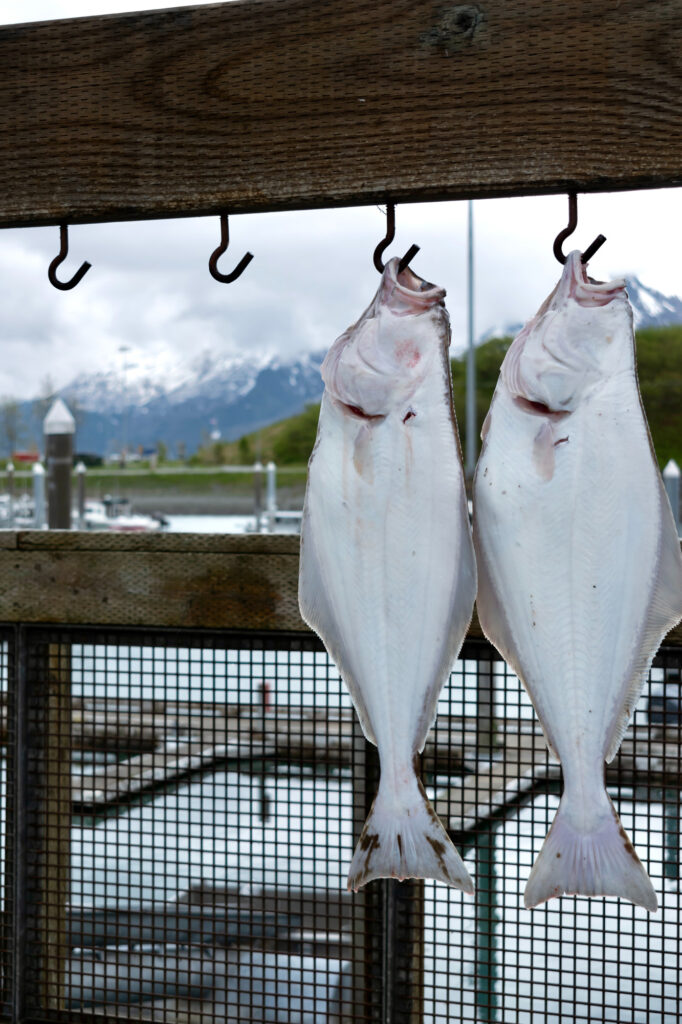
Hard to believe another year of fishing is in the rearview mirror, and while I’m quick to reminisce, I’m already looking forward to seeing what’s in store for 2024. One exciting development in the not-too-distant future will be the state’s halibut fisheries, stretching from Neah Bay south to Ilwaco, and within Puget Sound and the Strait of Juan de Fuca, as early indications show the 2024 season should be on par with previous years.
After two public meetings in late summer and fall, the Washington Department of Fish and Wildlife (WDFW) submitted their 2024 recommendations that were adopted by the Pacific Fishery Management Council (PFMC) at a meeting in early November. The proposed 2024 halibut fishing seasons on the table are:
Marine Area 1 (Ilwaco):
- Option 1 – Open May 2-21 (fishing allowed Thursdays, Sundays, and Tuesdays only), and open May 23 and May 26 only. Then open from May 30 through June 30 (fishing allowed Thursdays, Sundays, and Tuesdays only). If additional quota remains, then fishery would reopen daily in August and September. The Marine Area 1 nearshore fishery will be open Monday through Wednesday following the opening of the all-depth fishery. It will remain open until the nearshore allocation is taken or September 30, whichever is earlier. On days when the all-depth halibut fishery is closed, taking, retaining, possessing, or landing halibut on groundfish trips is only allowed in the nearshore area.
Marine Area 2 (Westport-Ocean Shores):
- Option 1 – Open May 2-30 (fishing allowed Thursdays, Sundays, and Tuesdays only) and open May 23 only. If sufficient quota remains, then fishery would reopen June 13, 16, 18, 20, 23, 25, 27, and 30. If additional quota remains, then fishery would reopen daily in August and September.
Marine Areas 3 and 4 (La Push and Neah Bay):
- Option 1 – Open May 2 through May 18 (fishing allowed Thursdays through Saturdays only), and open May 24 and May 26. Then open from May 30 through June 30 (fishing allowed Thursdays and Sundays only). If additional quota remains after June 30, then fishery would reopen daily in August and September.
- Option 2 – Open May 2-20 (fishing allowed Thursdays and Saturdays only), and open May 24 and May 26. Then open from May 30 through June 30 (fishing allowed Thursdays through Sundays only). If additional quota remains after June 30, then fishery would reopen daily in August and September.
Marine Areas 5 to 10 (Strait of Juan de Fuca and open areas of Puget Sound):
- Option 1 – Open daily April 4 through June 30. If additional quota remains after June 30, then fishery would reopen daily in August and September.
- Option 2 – Open April 4 through June 30 with fishing allowed Thursdays to Mondays only. If additional quota remains after June 30, then fishery would reopen daily in August and September.
Marine Areas 11, 12, and 13 (south-central and southern Puget Sound and Hood Canal):
- Closed year-round for halibut.
Other proposed rules:
- Marine Areas 5 (Sekiu-Pillar Point): It is permissible for halibut anglers to retain lingcod and Pacific cod caught while fishing for halibut in waters deeper than 120 feet on days that halibut and lingcod fisheries are open.
- Marine Areas 6 to 10 (eastern Strait of Juan de Fuca and open areas of Puget Sound): It is unlawful for halibut anglers to retain lingcod and Pacific cod caught while fishing for halibut in waters deeper than 120 feet on days that halibut fishing is open.
- Marine Areas 1 to 10: Daily bag limit of one halibut per angler, with no minimum size limit. Annual limit to be determined. All catches must be recorded on WDFW catch record card. Possession limits remain the same.
In recent years, fishery managers and recreational constituents/stakeholders have looked at ways to provide more stability with how halibut seasons are structured. The season length analysis for all marine areas revealed a dramatic improvement beginning in the 2022 compared to data from 2018, 2019, and 2021. In September, there was feedback by stakeholders to increase the annual bag limit from four to six halibut, according to WDFW staff, whom agreed to follow up with stakeholders before adopting a change, which can only be made through the state regulatory process only. The proposals for 2024 reflect increasing confidence that building more opportunity into the schedule early in the season is not likely to jeopardize achieving a season that lasts at least through May. WDFW has worked with the National Marine Fisheries Service in recent years to implement the flexible management provisions in the “Catch Sharing Plan”. The 2023 Washington recreational halibut quota was 281,728 pounds and was part of a 1.52-million-pound quota for Washington, Oregon, and California. The International Pacific Halibut Commission (IPHC) will meet on January 22-26 in Anchorage, Alaska, where they’ll review the halibut regulations and adopt catch quotas from Alaska south to California. The National Marine Fisheries Service (NMFS) will then make a final approval of Washington’s halibut fishery plans, sometime in March or sooner. You can find more information on the state’s halibut fisheries at: wdfw.wa.gov/fishing/regulations/halibut.


